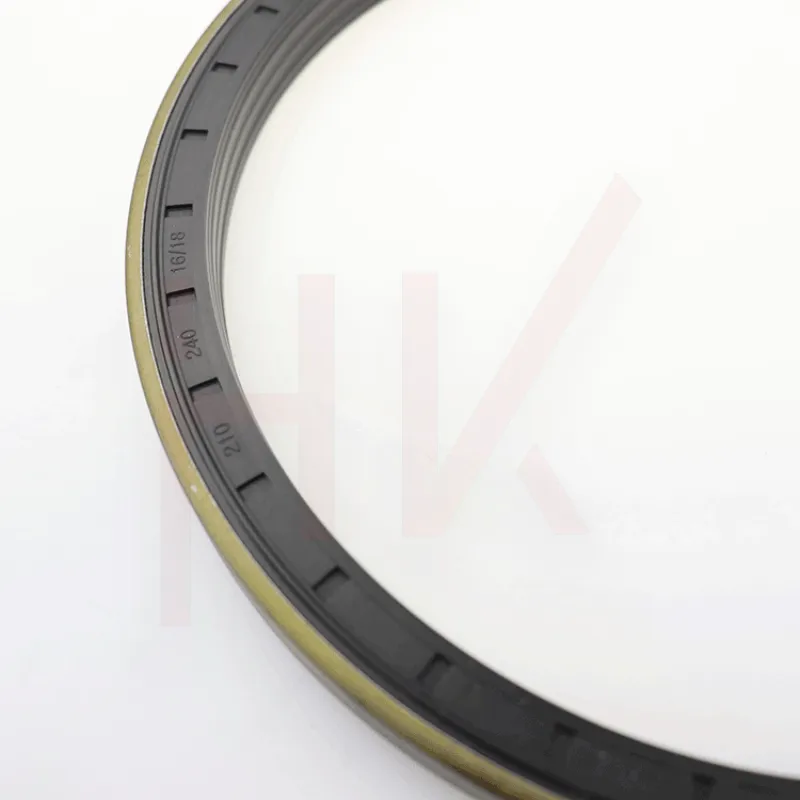Dec . 06, 2024 10:52 Back to list
Understanding Radial Oil Seals and Their Applications in Mechanical Engineering
Understanding Radial Oil Seals Function, Types, and Applications
Radial oil seals, also known as radial shaft seals, are crucial components in various mechanical systems, a fundamental part of machinery that ensures the integrity of lubricants and prevents contaminants from entering critical areas. These seals are designed to accommodate rotating shafts, creating a reliable barrier that maintains lubrication while keeping dirt, dust, and moisture at bay.
Functions of Radial Oil Seals
The primary function of a radial oil seal is to retain lubrication in rotating machinery while preventing external contaminants from entering. This dual function is essential for the longevity and efficiency of mechanical systems. The seal achieves this through its design, which typically features a flexible lip that exerts pressure against the shaft. This design not only minimizes leakage but also adapts to slight variations in shaft movement and alignment.
In addition to lubrication retention, radial oil seals also contribute to a reduction in friction, which, in turn, can decrease wear on surrounding components. By maintaining a consistent oil film on the shaft, these seals help in ensuring smooth operation, reducing the likelihood of overheating and mechanical failure.
Types of Radial Oil Seals
Radial oil seals come in various designs and materials, each suited for specific applications. The most common types include
1. Single-Lip Seals These are the most widely used radial oil seals. They consist of one sealing lip that contacts the shaft, providing effective sealing and lubrication retention. Single-lip seals are suitable for applications where pressures are relatively low, and contamination is minimal.
2. Double-Lip Seals As the name suggests, double-lip seals feature two sealing lips, which provides an additional layer of protection against dirt and contaminants. These seals are particularly useful in environments with higher contamination risks or where additional lubrication retention is required.
3. Spring-Loaded Seals These seals incorporate a spring mechanism that helps maintain consistent contact between the seal lip and the shaft. This design compensates for wear over time and can effectively handle varying operating conditions, making them suitable for demanding applications.
radial oil seal

4. Brush Seals and Wiper Seals These variants feature a brush or wiper element that assists in clearing debris from the shaft, providing an additional line of defense against contamination. They are particularly popular in industries such as automotive and heavy machinery, where exposure to dirt is common.
5. Custom Seals In addition to standard designs, many manufacturers offer custom radial oil seals tailored to specific requirements. These seals can be designed to withstand extreme temperatures, aggressive chemicals, or unique mechanical configurations.
Applications of Radial Oil Seals
Radial oil seals find applications across a wide range of industries. Common usages include
- Automotive They are extensively used in engines, transmissions, differential assemblies, and wheels to retain oil and prevent leaks.
- Industrial Machinery In manufacturing equipment such as pumps, compressors, and conveyors, seals help maintain lubrication and protect against dust and particles.
- Aerospace High-performance seals are used in aircraft engines and other critical systems where reliability is paramount.
- Marine In marine environments, radial oil seals protect against the corrosive effects of saltwater while retaining vital lubricants in engines and gearboxes.
Conclusion
Radial oil seals play an indispensable role in promoting the efficiency and durability of various mechanical systems. Their ability to prevent lubricant loss and ingress of contaminants significantly influences the performance of machinery. As industries continue to evolve, the demand for advanced sealing solutions is likely to grow, driven by the need for higher efficiency and reliability in mechanical systems. Understanding the intricacies of radial oil seals, including their functions, types, and diverse applications, is essential for engineers and technicians involved in design, maintenance, and repair across multiple industries. Emphasizing the importance of proper seal selection and maintenance can further enhance operational performance, reducing downtime and costs associated with leaks and failures.
-
TCN Oil Seal Metal Ring Reinforcement for Heavy Machinery
NewsJul.25,2025
-
Rotary Lip Seal Spring-Loaded Design for High-Speed Applications
NewsJul.25,2025
-
Hydraulic Cylinder Seals Polyurethane Material for High-Impact Jobs
NewsJul.25,2025
-
High Pressure Oil Seal Polyurethane Coating Wear Resistance
NewsJul.25,2025
-
Dust Proof Seal Double Lip Design for Construction Equipment
NewsJul.25,2025
-
Hub Seal Polyurethane Wear Resistance in Agricultural Vehicles
NewsJul.25,2025
-
The Trans-formative Journey of Wheel Hub Oil Seals
NewsJun.06,2025
Products categories
















